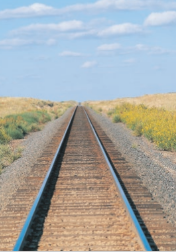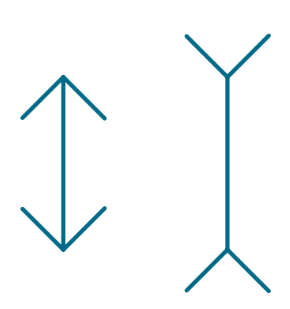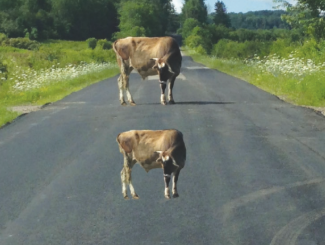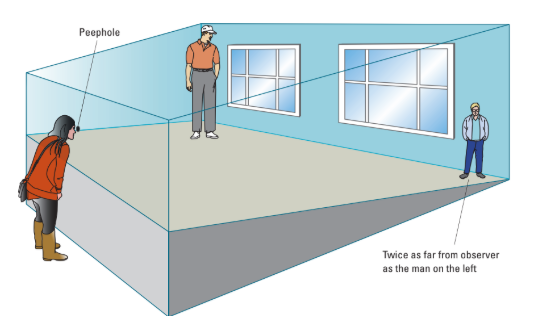Chapter 7: depth and size perception
1/36
Earn XP
Description and Tags
week 7
Name | Mastery | Learn | Test | Matching | Spaced |
|---|
No study sessions yet.
37 Terms
cue approach to depth perception
depth perception results from 3 sources of information
monocular cues to depth present in the image
binocular cues from the comparison of images in each eye
cues from focusing the eyes (vergence, accomodation)
monocular depth cues
depth cues that require only 1 eye
pictorial cues
information about depth that can be inferred from a static picture
movement based cues
cues about depth that can be seen with a single eye in which the inference of distance comes from motion
occlusion
a visual cue that occurs when one object partially hides or obstructs the view of a second object
infer that the hidden object is further away from us than the object that obstructs it
relative height
objects closer to the horizon are seen as more distant
relative size
the more distant an object is, the smaller the image on the retina will be
familiar size
knowing the retinal size of a familiar object at a familiar distance allows us to use that retinal size to infer distance
linear perspective
pictorial depth cue that comes from the fact that parallel lines seem to converge as they recede into the distance (train tracks)

texture gradient
monocular depth cue
textures become finer as they recede in the distance

atmospheric perspective
pictorial depth cue
objects in the distance appear blurred and tinged with blue

shadows
angle of the shadow can give info on how far the object is in front of the background
motion parallax
monocular depth cue
relative velocities of objects moving across the reinae of a moving person
deletion
gradual occlusion of a moving object as it passes behind another object
accretion
gradual reappearance of a moving object as it emerges from behind another object
optic flow
perception of objects as we move forward or backward
objects get bigger as they get closer
faraway objects move slower than close
(con)vergence
inward bending of the eyes when looking at closer objects
stereopsis
the sense of depth we receive from the visual systems processing of the comparison of the 2 different images from each retina
binocular density
our 2 eyes are in diff locations in our head
have different views of the world
corresponding points
a point on the left retina and a point on the right would coincide if the 2 retinae were superimposed
noncorresponding points
point on left retina would not coincide with right retina if superimposed
horopter
region in space where 2 images from an object fall on corresponding locations on the 2 retinae
panums area of fusion
region of small disparity around the horopter where the 2 images can be fused into a single perception
diplopia
double images/ seeing 2 copies of the same image
results from images of an object having too much disparity to lead to fusion
crossed disparity
direction of disparity for objects is closer to the view than the horopter
→ image in the left eye is to the right of the imagine of the object in the right eye
uncrossed disparity
direction of disparity for objects that are farther from the viewer than the horopter
→ image of object in left eye is to the LEFT of the image in the image of object in the right eye
zero disparity
retinal images fall along corresponding points
object is along the horopter
correspondence problem (depth perception)
can’t determine which image in one eye matches the correct image in the other eye
random dot stereograms
images consist of a randomly arranged set of black and white dots
right and left eye images arrange identically except that some of the dots are moved to the left or right in 1 of the images
creates either crossed or uncrossed disparity
binocular cells
2 receptive fields
1 for each eye
match images coming to each eye
size-distance invariance
relation between perceived size and perceived distanced
perceived size depends on perceived distance
perceived distance may depend on perceived size
visual angle
angle of an object relative to the observers eye
size constancy
object seems to have a fixed size despite changing in the size of the visual angle that accompanies changes in distance
muller lyer illusion
line that has 2 lines going away at an angle looks longer than a line of the same length but the end lines angle back

ponzo illusion
2 horizontal lines are drawn (1 above the other)
both lines are on top of 2 inward angled vertical lines
top line looks longer

ames room
2 people of the same size standing in the 2 back corners will look very different in height

moon illusion
moon looks bigger when it’s near the horizon than it does overhead